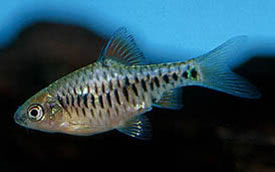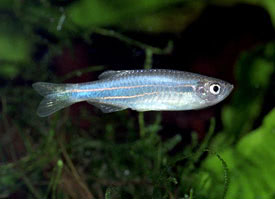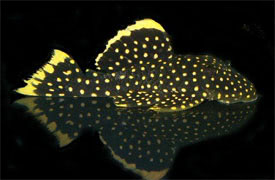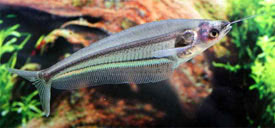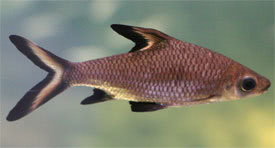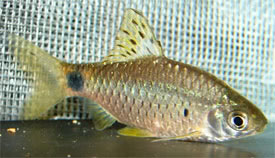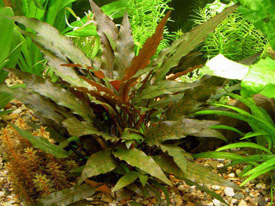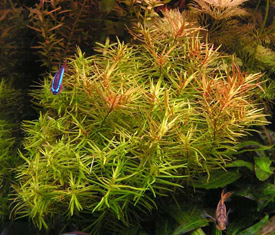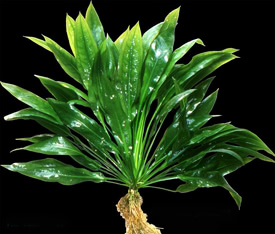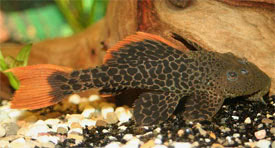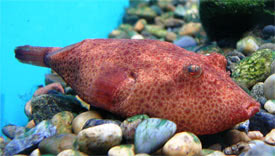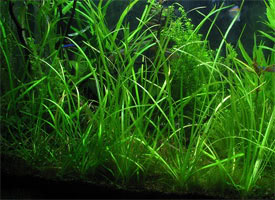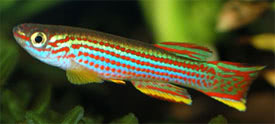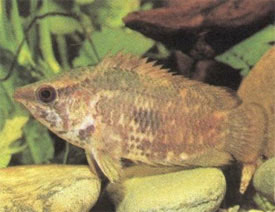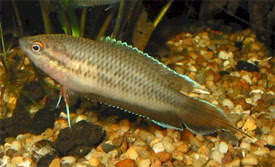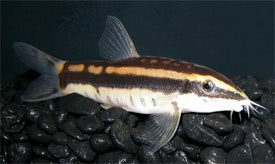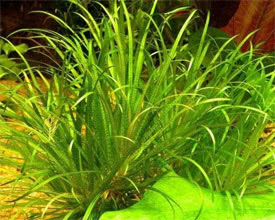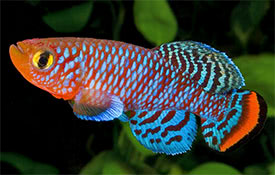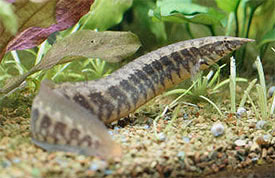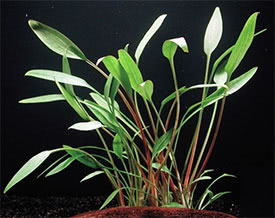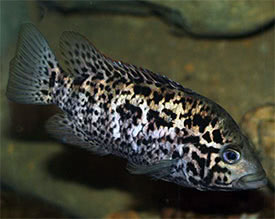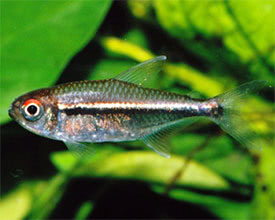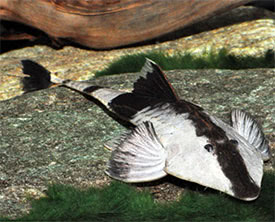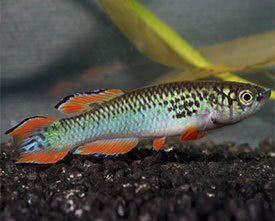
 Magyarul / Hungarian
Magyarul / Hungarian
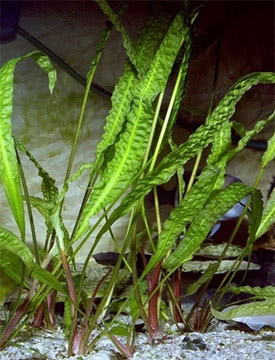
- Scientific name: Cryptocoryne aponogetifolia
- Synonyms: -
- Common name: Water trumpet
- Family: Araceae
- Group: Aquarium plants
- Max height: 100 cm
- Distribution: Asia; Phillipines
- Habitat: Inhabits along the edges of fast-flowing rivers and streams on the island of Luzon, where the substrate is mostly basaltic rock mixed with limestone.
- Substrate: Gravel
- Placement in aquarium: Background and on the sides
- Planting density: 1 plant for 40 cm2
- Lighting needs: Low-Bright
- Temperature: 20-30 °C
- pH: 6-7,8
- Hardness: 5-15 NK°
Description: For some time it was synonym of Cryptocoryne usteriana but the two were confirmed as separate species by J. Bogner in 1984 as Cryptocoryne usteriana generally exhibit a rosy red color on the undersides. The scientific name 'aponogetifolia' refers to the fact that the leaves of this plant resemble the leaves of certain species of Aponogeton which are also fairly common in Southeast Asia. The linear leaves may reach over 100 cm in length and 5 cm wide in very large aquariums or ponds. More typically leaves will grow to about 50 cm and may drift along the water surface. Cryptocoryne aponogetifolia has red - brown colored stem. Considered fairly easy to grow, Cryptocoryne aponogetifolia prefers harder water than many others of the genus and seems more resistant to 'Cryptocoryne melt', so it is very popular among African cichlid keepers. Even aquarium specimens may flower. The flower is cream colored with hints of red or purple. Best placed on the side or in the back of the tank. Propagation is easy, daughter plants from runners are numerous and fast growing. Plants will take some months to get established in the aquarium, but will then send out strong runners.























